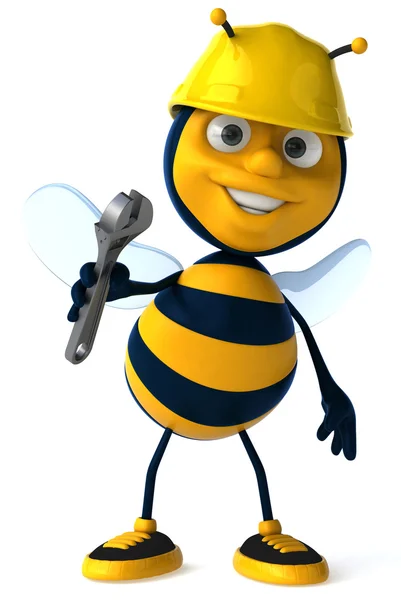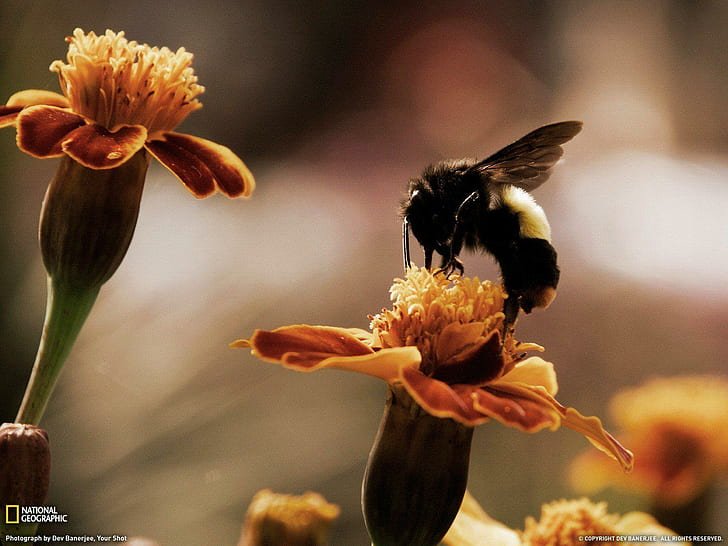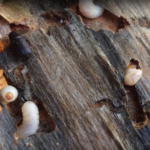Are you struggling with a bee infestation and wondering how to kill bees safely and effectively? Bees, while essential for our ecosystem, can become a significant problem when they invade your home or garden. In this guide, we’ll explore the most effective methods to eliminate these unwanted guests, ensuring your home remains a safe and comfortable space. Discover practical tips and techniques on how to kill bees while considering humane and environmentally friendly options.
Dealing with a bee infestation can be a daunting task, especially when you need to learn how to kill bees without harming your surroundings. Bees are crucial pollinators, but when they decide to nest in your home, they can pose a threat to your safety and comfort. This article provides a comprehensive overview of how to kill bees, offering step-by-step instructions and expert advice to help you manage and eliminate bee problems efficiently.
If you’ve found yourself searching for ways on how to kill bees, you’re likely facing the challenges of a bee infestation in or around your home. While bees are vital to our environment, their presence in living spaces can lead to discomfort and potential danger. This blog post delves into the most effective strategies for how to kill bees, ensuring you can protect your home from these buzzing intruders while keeping safety and environmental considerations in mind.
Table of Contents
ToggleIntroduction
Importance of Addressing Bee Infestations
Protecting Health and Safety
Addressing bee infestations promptly is crucial for protecting the health and safety of everyone in your home. Bee stings can cause severe allergic reactions in some individuals, potentially leading to anaphylactic shock. Understanding how to kill bees effectively helps prevent such risks and ensures your family and pets remain safe from bee stings.
Preventing Property Damage
Bee infestations can lead to significant property damage if left unaddressed. Carpenter bees, for instance, bore into wood structures, weakening them over time. Honeybee hives inside walls or attics can also cause structural damage and attract other pests. Learning how to kill bees and remove their nests protects your home from costly repairs and deterioration.
Maintaining a Comfortable Living Environment
A bee infestation can disrupt the comfort and peace of your home. The constant presence of bees can make outdoor spaces unusable and indoor areas stressful. By addressing how to kill bees and eliminate infestations quickly, you restore a safe and enjoyable environment for your family. Ensuring your home remains bee-free contributes to overall well-being and peace of mind.
Overview of Methods to Kill Bees
Chemical Solutions
Chemical solutions are a common and effective method for those exploring how to kill bees. Insecticide sprays, dusts, and aerosols specifically designed for bees can quickly reduce their numbers. These products are best used during times when bee activity is low, such as early morning or late evening. Following the instructions on these products ensures safe and effective bee eradication.
Natural and Non-Chemical Methods
For those who prefer non-toxic approaches, natural methods offer viable alternatives on how to kill bees. Natural repellents like peppermint, eucalyptus, and citronella oils can deter bees from nesting in your home. Additionally, homemade traps using sweet solutions can capture and kill bees without chemicals. These methods are safer for households with children and pets while still being effective.
Professional Extermination Services
When bee infestations are extensive or located in hard-to-reach areas, professional extermination services provide a reliable solution. Experts have the tools and knowledge to handle bee removal safely and thoroughly. They can assess the severity of the infestation and apply the most effective methods on how to kill bees. Professional services ensure long-term results and offer peace of mind that the problem is fully resolved.
Understanding Bee Behavior

Types of Bees Commonly Found in Homes
Understanding how to kill bees starts with identifying the types commonly found in homes. Honeybees are known for their large hives and can often be found in wall cavities or attics. Carpenter bees, which drill holes into wood structures, can cause significant damage to your property. Bumblebees, although less aggressive, can still nest in inconvenient places like sheds and garages. Recognizing these types helps you determine the best approach for bee removal.
Why Bees Infest Homes
Bees infest homes in search of ideal nesting sites and food sources. Structures like wall cavities, attics, and eaves provide sheltered environments perfect for nesting. Sweet scents from food or garbage attract bees, leading them into your living spaces. Knowing why bees choose your home helps in formulating an effective strategy on how to kill bees and prevent future infestations.
Signs of a Bee Infestation
Detecting a bee infestation early is crucial for successful removal. Signs include increased bee activity around your home, especially near entry points like windows and vents. You may also notice visible nests or hear buzzing sounds coming from walls or attics. Identifying these signs early allows you to take timely action on how to kill bees and safeguard your home.
Preparation for Bee Removal
Safety Precautions
Before attempting to kill bees, it’s important to take safety precautions. Wear protective clothing, including gloves, long sleeves, and a hat with a veil to prevent stings. Make sure you have an epinephrine auto-injector if you or someone nearby is allergic to bee stings. Prioritizing safety helps ensure a secure environment while you focus on how to kill bees effectively.
Necessary Tools and Equipment
Effective bee removal requires the right tools and equipment. Essential items include insecticide sprays, bee traps, and protective clothing. A ladder might be necessary to reach high nests, and a flashlight can help inspect dark areas. Having these tools ready ensures you are well-prepared for the task of how to kill bees and eliminate the infestation.
When to Seek Professional Help
In some cases, seeking professional help is the best approach to how to kill bees. If the nest is large, in a hard-to-reach area, or if you have allergies, professional exterminators can handle the situation safely and efficiently. Professionals have the expertise and equipment to manage bee infestations, ensuring complete and effective removal.
Methods for Killing Bees
Chemical Solutions: Insecticide Sprays
Insecticide sprays are a common method for those learning how to kill bees. These sprays are designed to target bees directly, reducing their numbers quickly. Apply insecticides during early morning or late evening when bee activity is low. Following the product instructions carefully ensures safe and effective bee removal.
Non-Chemical Solutions: Natural Repellents
Natural repellents offer a safer alternative for those considering how to kill bees without chemicals. Essential oils like peppermint, eucalyptus, and citronella can repel bees when applied around entry points. Creating a spray with these oils and water provides a non-toxic solution to deter bees, making your home less attractive to them.
DIY Traps
DIY traps are an effective way to manage bee populations if you’re exploring how to kill bees at home. Simple traps can be made using a bottle filled with a sweet solution like sugar water or soda. Bees are attracted to the sweet liquid, become trapped, and eventually drown. Regularly check and dispose of the traps to maintain their effectiveness.
Step-by-Step Guide to Killing Bees
Identifying the Nest Location
The first step in how to kill bees is identifying the nest location. Look for areas with high bee activity such as eaves, wall cavities, and attics. Use a flashlight to inspect dark corners and listen for buzzing sounds. Accurate identification of the nest ensures you target the right spot for effective bee removal.
Applying Chemical Treatments
Applying chemical treatments is a direct approach to how to kill bees. Use insecticides designed specifically for bees and follow the manufacturer’s instructions. Spray the nest entrance during low activity periods, like early morning or late evening. Protective gear is essential to avoid exposure to harmful chemicals and ensure safe application.
Setting Up Traps and Baits
Setting up traps and baits complements other methods of how to kill bees. Place traps filled with a sweet attractant near the nest or high activity areas. Baits can draw bees away from sensitive spots, reducing the risk of stings. Regular monitoring and replacement of traps enhance their effectiveness in managing bee populations.
Preventing Future Bee Infestations
Sealing Entry Points
To prevent future infestations, sealing entry points is crucial. Inspect your home for cracks, gaps, and openings, especially around windows, doors, and vents. Use caulk or other sealants to close these gaps, making it difficult for bees to enter. This proactive step is essential in preventing bees from nesting in your home again.
Regular Home Maintenance
Regular home maintenance is key to avoiding bee infestations. Conduct periodic inspections of your property to identify potential nesting sites. Keep your yard clean by removing debris and trimming vegetation. Repair structural damage promptly, such as broken siding or loose shingles, to deter bees from establishing new nests.
Natural Deterrents
Using natural deterrents can help keep bees away without harming them. Plant bee-repellent herbs like mint, lemongrass, and marigolds around your home to discourage bees from nesting nearby. Additionally, citronella candles or essential oil diffusers can create an unappealing environment for bees. These natural methods provide a humane way to prevent bee infestations.
Safety and Environmental Considerations
Risks of Using Pesticides
Understanding the risks of using pesticides is important when learning how to kill bees. Pesticides can pose health hazards to humans and pets if not used properly. They can also harm beneficial insects and wildlife, disrupting local ecosystems. Using pesticides responsibly and following safety guidelines minimizes these risks.
Alternatives to Killing Bees
Considering alternatives to killing bees is both humane and environmentally friendly. Bee relocation by a professional beekeeper preserves the bees while removing them from your property. Habitat modification, such as removing attractants and sealing entry points, can also deter bees without lethal methods. These alternatives support bee conservation while addressing your infestation problem.
Safe Disposal of Chemicals and Equipment
Safe disposal of chemicals and equipment used in bee removal is vital to protect the environment. Follow local regulations for disposing of insecticides and other hazardous materials. Never pour leftover chemicals down the drain or into the soil. Properly clean and store equipment to prevent accidental exposure and contamination.
When to Call a Professional
Assessing the Severity of the Infestation
Assessing the severity of the infestation is crucial in deciding how to kill bees. Large nests, aggressive bee behavior, or difficult-to-reach locations often require professional intervention. If DIY methods fail or the infestation poses significant risks, it’s best to call in experts for effective and safe bee removal.
Benefits of Professional Extermination Services
Professional extermination services offer numerous benefits for those unsure how to kill bees. Experts have the experience and equipment to handle infestations safely and efficiently. They can provide long-term solutions and preventive measures to ensure bees do not return. Professional services also include follow-up visits to ensure complete removal.
How to Kill Bees Choose a Reliable Pest Control Service
Choosing a reliable pest control service is essential for effective bee removal. Look for companies with positive reviews, proper licensing, and experience in handling bees. Request quotes from multiple providers to compare services and prices. Ensure the company follows environmentally friendly practices and offers a detailed plan for dealing with your bee infestation.
Conclusion
Summary of Key Points
In this article, we covered essential information on how to kill bees and protect your home from infestations. We discussed understanding bee behavior, preparation for removal, various methods for killing bees, and steps to prevent future infestations. Additionally, we explored safety considerations and when to seek professional help. Understanding these key points equips you to handle bee infestations effectively and safely.
Final Tips for Homeowners
As a final tip for homeowners, always prioritize safety when dealing with bee infestations. Use protective gear, follow product instructions carefully, and consider non-lethal alternatives when possible. Regular maintenance and preventive measures can help keep your home bee-free. If in doubt, don’t hesitate to call a professional to ensure the problem is addressed comprehensively.
Frequently Asked Questions (FAQs)
Common Concerns About Bee Infestations
Common concerns about bee infestations include the risks of stings, potential property damage, and the environmental impact of removal methods. Many people also worry about the safety of using insecticides around children and pets. Addressing these concerns can help homeowners make informed decisions about how to handle bee problems effectively and safely.
Additional Resources for Bee Control
For more information on bee control, consider consulting resources such as local extension services, pest control associations, and environmental organizations. These sources offer valuable advice, best practices, and additional tips on how to kill bees and prevent future infestations.




